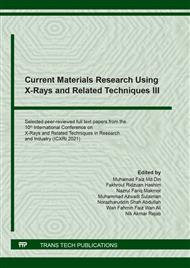p.278
p.284
p.293
p.299
p.308
p.319
p.326
p.332
p.337
Ionizers as Major ESD Countermeasure in 12nm Gate Oxide Semiconductor Manufacturing
Abstract:
The sensitive Electrostatic Discharge (ESD) has been found to be the major causes in semiconductor manufacturing that contributed in the event when the samples did not function properly and failed during testing. Various techniques had been studied and implemented as the ESD countermeasures. Based on the EDS event model, control measures on people, grounding and ionizations have been practiced as the main preventive measures against ESD. However, many aspects of the measures need to be customized to the specific fabrication areas. This paper conducted several experiments in the use of ionizers to tackle the ESD issue in a 12nm Gate Oxide semiconductor fabrication facility. Based on several hypotheses on the areas and operations that are prone to ESD during the back-end processes, experiments were conducted to evaluate them. The results affirm the need to individually and specifically check the effectiveness of the usage of ionizers to combat ESD as some ionizer were found to be not effective at the location or area where they are installed.
Info:
Periodical:
Pages:
308-315
Citation:
Online since:
January 2022
Price:
Сopyright:
© 2022 Trans Tech Publications Ltd. All Rights Reserved
Share:
Citation:


